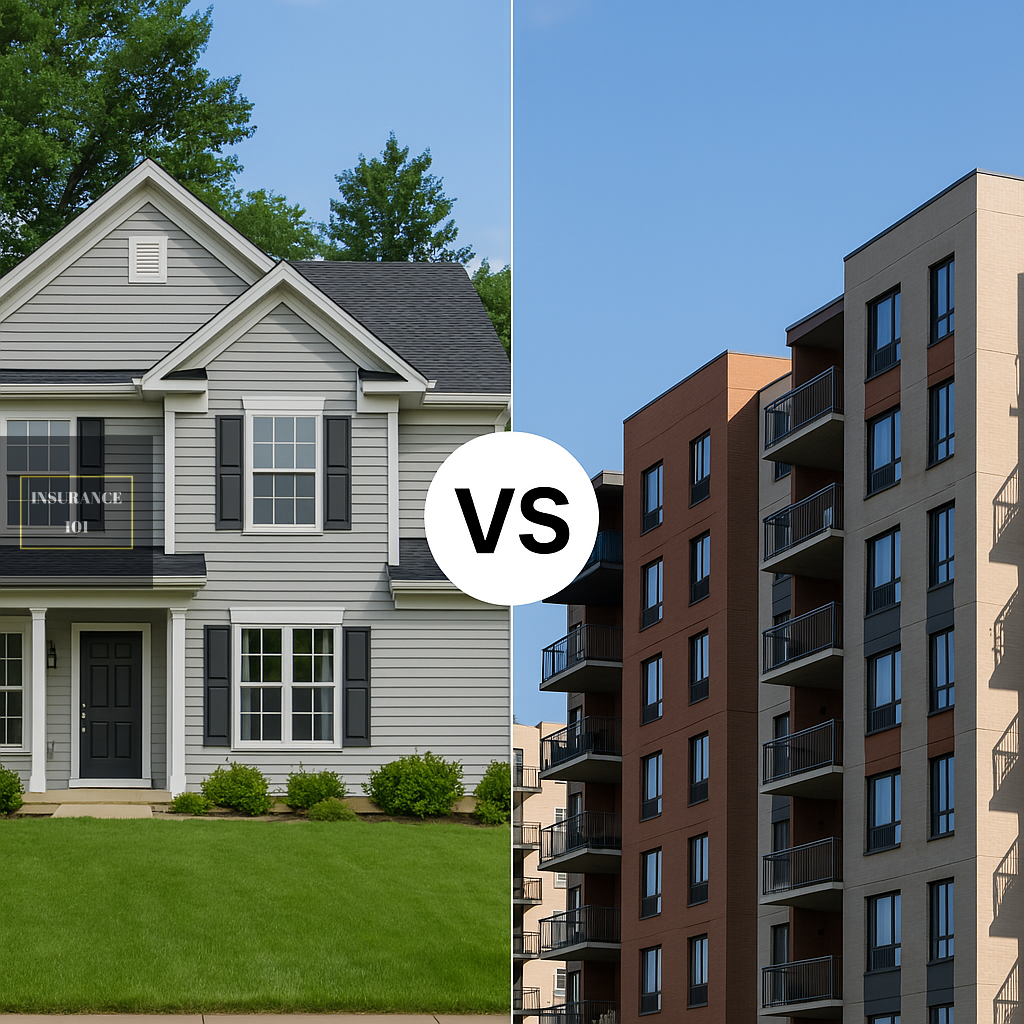The Overlooked Insurance Question: Do You Know What Really Covers Your Home?
If your apartment catches fire, who pays for your belongings? If someone slips on your front porch and sues, are you personally liable? For many homeowners and renters, the answer isn’t just uncertain—it’s a costly gamble.
In 2025, with the global housing market in flux, skyrocketing construction costs, and a surge in remote living, understanding the right type of insurance for your living situation is more important than ever.
This article unpacks the often-misunderstood differences between homeowners insurance and renters insurance. Whether you’re a digital nomad renting a condo in Berlin or a family homeowner in Austin, this guide will help you:
- Understand key definitions and terminology.
- Compare coverage types and exclusions.
- Analyze real-world examples with updated statistics.
- Learn formulas to calculate your insurance needs.
- Hear from insurance experts on best practices.
As a global insurance specialist with over 20 years in underwriting, claim auditing, and risk modeling, I’ve consulted for clients from Tokyo to Toronto. Let’s cut through the noise and help you choose wisely.
What Is Homeowners Insurance?
Homeowners insurance is a policy that protects individuals who own their homes. It typically covers the structure of the home, personal belongings inside the home, liability for accidents, and additional living expenses if the home becomes uninhabitable due to a covered event.
Key Coverages:
- Dwelling Coverage: Pays for damage to the home’s structure.
- Other Structures: Covers garages, sheds, fences, etc.
- Personal Property: Pays to replace belongings (e.g., furniture, electronics).
- Liability Protection: Covers legal fees and medical costs if someone is injured on your property.
- Loss of Use: Covers hotel or rental costs if you can’t live in your home temporarily.
Example:
In 2024, a homeowner in British Columbia filed a claim when a tree crashed into their house during a windstorm. Their dwelling coverage reimbursed the full $32,000 repair cost, while loss of use paid for a hotel stay during reconstruction.
What Is Renters Insurance?
Renters insurance, also known as tenants insurance, is designed for those who lease or rent their living space. It does not cover the structure itself (which is the landlord’s responsibility) but focuses on the tenant’s belongings and liability.
Key Coverages:
- Personal Property: Protects clothes, furniture, and electronics.
- Liability Coverage: If you’re sued for injury or property damage.
- Loss of Use: Covers living expenses if your rental becomes uninhabitable.
- Medical Payments to Others: Covers small medical expenses if someone is hurt in your apartment.
Example:
In 2023, during the New York flash floods, renters in the Bronx saw apartments flooded with water damage. Many had renters insurance that covered the cost of replacing damaged laptops, clothes, and temporary lodging.
Comparative Table: Homeowners vs. Renters Insurance (2025)
| Feature | Homeowners Insurance | Renters Insurance |
|---|---|---|
| Who Needs It | Homeowners | Tenants |
| Covers Structure | ✅ Yes | ❌ No |
| Covers Personal Property | ✅ Yes | ✅ Yes |
| Covers Liability | ✅ Yes | ✅ Yes |
| Cost (U.S. Avg/Year) | $1,759 (2024, NAIC) | $179 (2024, III) |
| Loss of Use Coverage | ✅ Yes | ✅ Yes |
| Mortgage/Landlord Required? | Often required by lenders | Often required by landlords |
Source: NAIC 2024 Report, Insurance Information Institute
Why the Difference in Cost?
Renters insurance is significantly cheaper than homeowners insurance because it does not cover the structure of the building. For homeowners, structural coverage constitutes a major part of the premium.
Here’s a simplified formula to understand it:
Annual Premium = (Dwelling Coverage + Liability + Contents + Loss of Use) × Risk Factor
For renters:
Annual Premium = (Contents + Liability + Loss of Use) × Risk Factor
Real-Life Data: Global Trends in 2025
According to Swiss Re Institute’s Sigma Report (2024):
- The global property insurance market grew by 6.1% in 2024.
- Homeowners claims accounted for 42% of all property-related claims.
- Renters insurance uptake rose by 18% globally, especially in cities with high rental populations like Berlin, Nairobi, and Seoul.
And in a report by Statista:
- Over 63% of millennials aged 25–40 do not fully understand what renters insurance covers.
- Yet 78% of all rental properties in the U.S. now require tenants to hold renters insurance.
Interview Insight: Why Coverage Gaps Can Ruin You
To deepen this discussion, I interviewed Cameron Davies, a senior risk analyst at UK-based insurer Aviva, who said:
“One of the biggest misconceptions among both homeowners and renters is assuming that their landlord or building manager’s insurance protects their personal property or legal liabilities. It doesn’t. We’ve handled countless cases where tenants were left financially crippled simply because they lacked a $12/month renters policy.”
Davies recalled a case where a tenant caused a kitchen fire that resulted in $26,000 worth of smoke damage. Without renters insurance, they paid out of pocket—and their credit was ruined.
Coverage Limitations: What’s Not Covered?
Homeowners Insurance Exclusions (unless extra riders are purchased):
- Floods
- Earthquakes
- War or nuclear hazard
- Wear and tear
- Sewer backup
Renters Insurance Exclusions:
- Damage to the building
- Roommate belongings (unless listed)
- Pest infestation
- Floods and earthquakes (unless covered via rider)
Want flood protection? You’ll need a separate flood insurance policy, often provided through government programs like the U.S. National Flood Insurance Program (NFIP).
Renters vs. Homeowners: Which Policy Should You Get?
Ask yourself:
- Do you own or rent your residence?
- Can you afford to replace your belongings tomorrow?
- Do you host guests often?
- Could you cover legal costs if someone sued you?
If you rent, renters insurance is likely sufficient. If you own, homeowners insurance is essential.
Use Case: Digital Nomad in Lisbon
Paulo, a freelance developer from Brazil, rented a studio in Lisbon. A neighbor’s pipe burst, damaging Paulo’s electronics. His renters insurance covered €3,200 in replacements within 12 days.
Pro Tip: Bundle and Save
Many insurers offer discounts when you bundle renters/homeowners with auto insurance. On average, you can save 10–25% annually.
Compare top insurance bundling options from:
Also explore international providers like:
Key Definitions: What You Should Know
| Term | Meaning |
|---|---|
| Deductible | The amount you pay before insurance kicks in. |
| Premium | What you pay monthly or annually to maintain the insurance. |
| Rider/Endorsement | Additional coverage you can add to a policy. |
| Actual Cash Value | Item’s value minus depreciation. |
| Replacement Cost | Cost to replace an item with a new one. |
| Loss of Use | Coverage for hotel/living costs if your home becomes unlivable. |
| Liability Coverage | Pays if you’re legally responsible for injuries or damages. |
| Peril | A cause of loss, like fire, theft, or hail. |
| Named Peril Policy | Covers only specific risks listed in the policy. |
| All-Risk Policy | Covers all risks except those specifically excluded. |
Final Words: Choose What Protects Your Reality
The world is changing fast. Housing is more temporary, disaster risk is higher, and insurance is becoming non-negotiable. Whether you’re investing in a home or renting while chasing your next adventure, one truth remains: financial protection isn’t optional—it’s essential.
Homeowners insurance and renters insurance may seem similar, but they solve different problems. One protects a structure, the other protects your lifestyle. In either case, understanding the differences could be the most cost-effective decision you make this year.
Glossary
- Deductible: The out-of-pocket cost you must pay before insurance pays the rest.
- Premium: The price you pay to maintain your insurance policy.
- Coverage Limit: The maximum your insurer will pay for a covered loss.
- Underwriting: The process insurers use to assess risk before issuing a policy.
- Claim: A formal request made to your insurer for payment due to a covered loss.
- Endorsement: Add-on coverage for things like jewelry or electronics.
- Exclusion: Items or events not covered by your policy.
- Peril: A specific risk or event, like fire, theft, or vandalism.
- All-Risk Policy: A broad policy that covers all perils except those excluded.
- Named Peril Policy: Only covers losses caused by events listed in the policy.
Explore More Expert Guides at Insurance-101.com
Discover more from INSURANCE 101
Subscribe to get the latest posts sent to your email.



